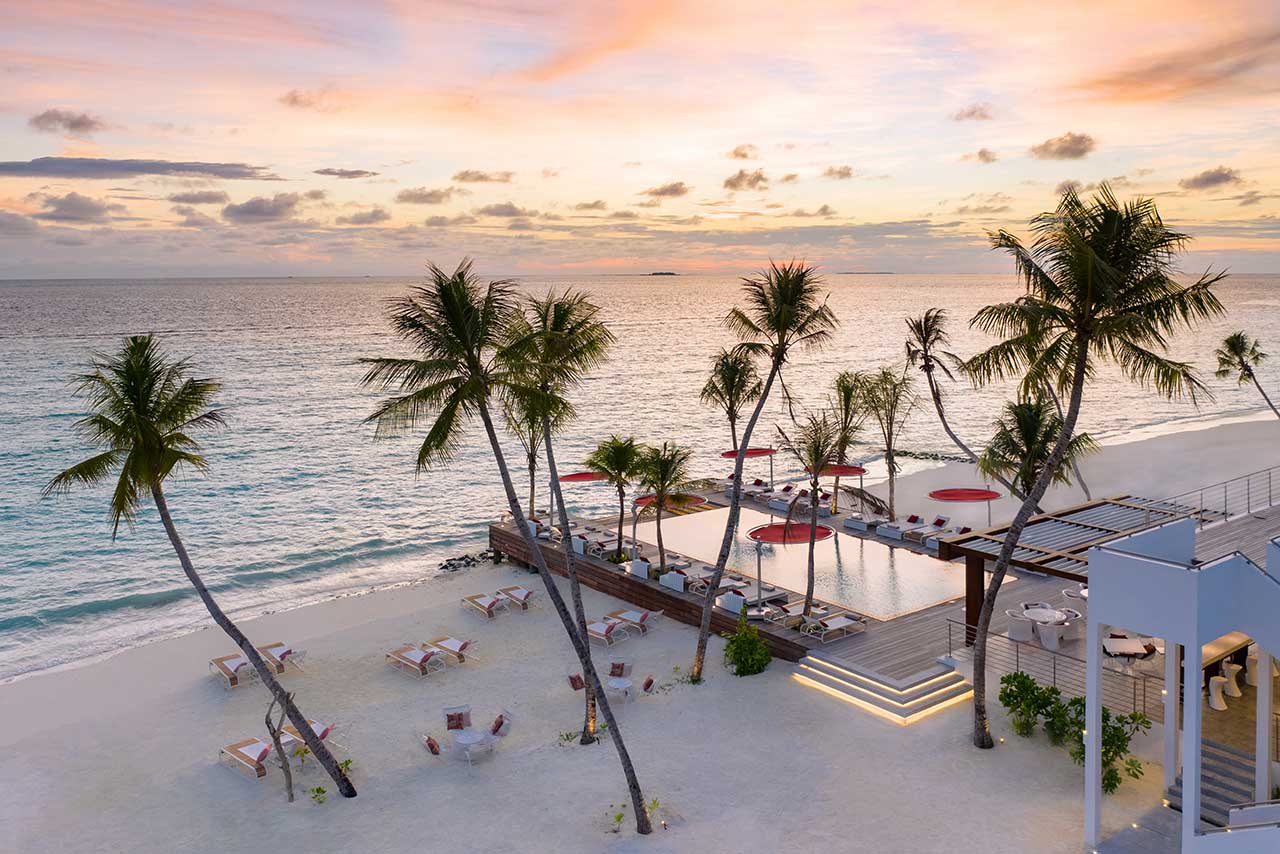About Maldives
GEOGRAPHY
The Maldives consists of 1,190 coral islands grouped in a double chain of twenty-seven atolls situated in the Indian Ocean. Most atolls consist of a large, ring-shaped coral reef supporting numerous small islands.
The country covers an area approximately 90,000 square kilometres, of which only 298 square kilometres is dry land. The islands are of average one to two square kilometres in area, and no individual island is longer than eight kilometres. The Maldives lies between 1-1.5 meters above sea level, with the highest island situated at 3 meters above sea level.
Maldives is largely flat and has no land features such as hills or rivers, but some islands have dunes such as that found in Hithadhoo island of Addu Atoll, and wetlands and marshes such as those found in the Fuvahmulah island of Gnaviyani Atoll.
The Maldives is renowned for its white sandy beaches, pristine turquoise waters and unique underwater marine life.
In 2011, Baa Atoll, which is home to a globally significant biodiversity among its numerous reefs in the Indian Ocean, became a designated UNESCO Biosphere Reserve.
The people of the Maldives islands are widely dispersed across the atolls, with about 200 inhabited islands. About 164 islands are developed as tourist resorts and the remaining islands are uninhabited or used for agriculture & other livelihood purposes.
The capital of the Maldives is Male’.

CLIMATE
The Maldives has a warm and humid tropical climate, all year round and is influenced by two dominating monsoons.
The fact that the Maldives is located at the equator, Maldives receives plentiful of sunshine throughout the year. The temperatures of Maldives ranges between 25° Celsius and 32° Celsius throughout the year.
The dry season (northeast monsoon) runs from December to April. While the rainy season (southeast monsoon) runs from late May to November.
For further details on weather in the Maldives, please visit http://www.meteorology.gov.mv/

LANGUAGE
The official language of the Maldives is Dhivehi, which is a unique language spoken only by the people of Maldives.
Dhivehi is an Indo-Aryan language with roots in Sanskrit and influenced by other major languages in the region. The language was influenced by the Arabic language with the advent of Islam in the 12th century, and the English language with the introduction of English medium education in the Maldives.
Spoken Dhivehi has notable dialects due to geographical dispersion, with the southern-most islands having the most distinct dialect.
Dhivehi script, known as Thaana, is written from right to left, similar to the Arabic language. This new script was invented in the 16th century, following the liberation of the country from the Portuguese.
There are 24 letters in the Thaana alphabet and 11 separate vowel or diacritical signs called fili in Maldivian, which are placed either above or below the alphabet letter designating the sound.
PEOPLE & CULTURE
While very little is known about the ancient history of the Maldives scholars and historians believe that the Maldives is an old nation populated well over 2500 years ago. The Maldivian race is the result of several waves of settlement from various parts of the Indian subcontinent and thousands of years of interactions of people of various races and ethnicities that crisscrossed the Indian Ocean over the centuries.
The country’s unique cultural traditions and the diverse physical traits of its people bear witness to the fact that the country was indeed a melting pot of people and cultures due to its geographical location. Over the centuries Maldivians were exposed to diverse genetical and cultural influences. Traces of Africa, Arabia, Indonesia and India are to be seen in the physical features of the people and in the culture, especially in the traditional drumming dance of Bodu Beru with its echoes of Africa. The rich Maldivian culture, craft and traditions have been shaped by the island environment and the seas that surround its people.
The current population is estimated at just over half a million in 2020. A third of the population lives in the capital city of Male’, while the rest live in other inhabited islands across the country.
The livelihood of Maldivians traditionally depended on the seas, fishery being the main source of sustenance. While fishery still contributes significantly to the economy in terms of employment and income, tourism is the main source of income for the Maldivian economy today.

